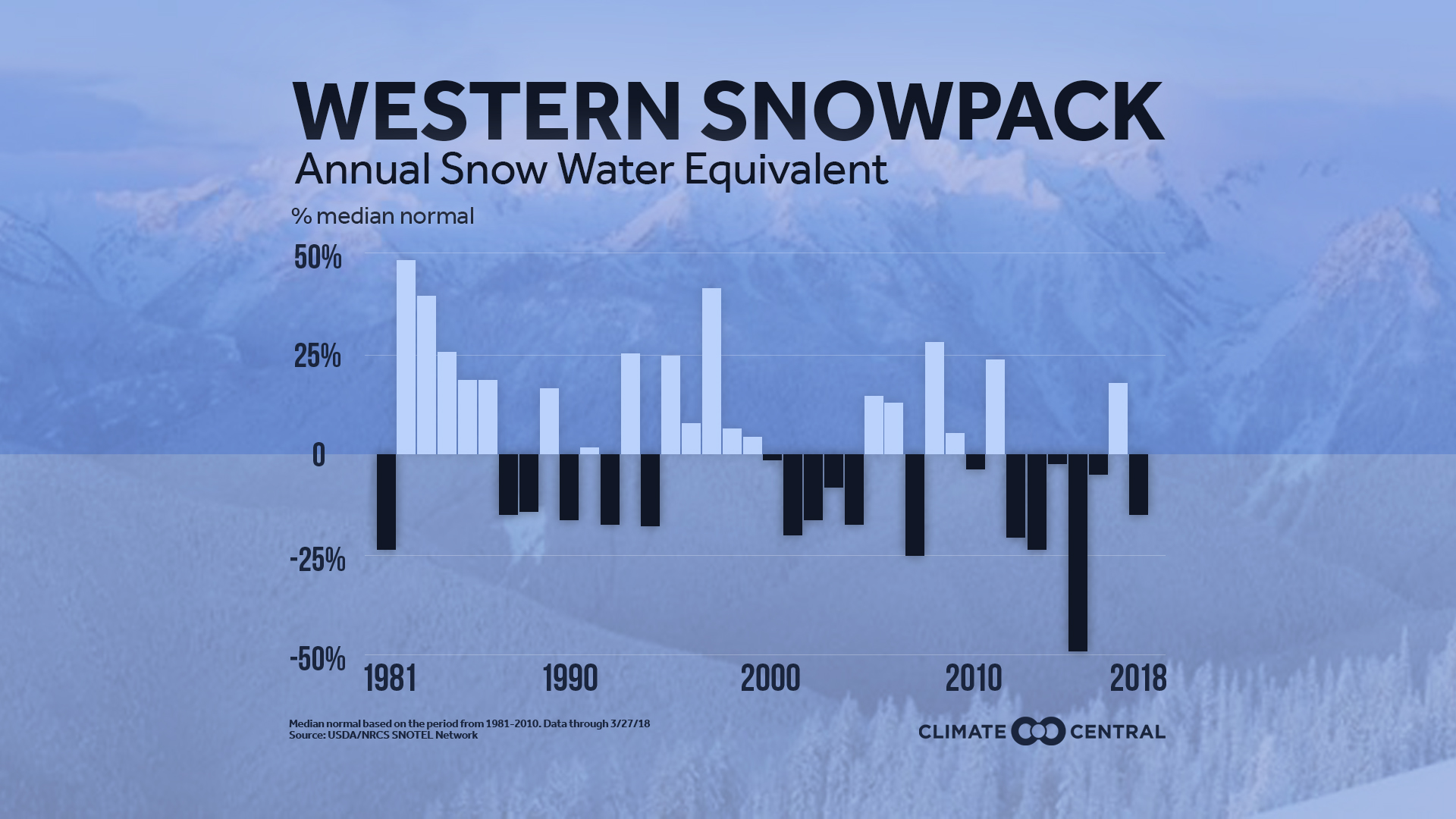Environment & Energy
Related: About this forum73% Of Stations In Lower 48 Receiving Less Annual Snowfall Than In 1970
The end of March marks the close of the winter precipitation season in the West, a good time to take stock of the snowpack in the mountains. The snow measurement indicates how much meltwater from that snowpack will be available for residential, agricultural, and commercial uses during the dry summer months that follow.

Even with the heavier snow in parts of the West last week, the amount of snowpack measured at the end of the season for the West as a whole is below normal. It is a shift from last year’s snow surplus but is more representative of the long-term trend; 2011 and 2017 were the only two years this decade in which the snowpack was above normal. The Northwest had a favorable snowfall season, but drought returned to California after last year’s wet season, with extreme drought now extending eastward from California to the Southern Plains. Arizona and New Mexico are particularly dry, with each state receiving less than half of its normal snowfall through the end of March.

As the world continues to warm from increased concentrations of greenhouse gases in the atmosphere, early spring snowpack has been trending downward. In addition to more intense droughts from decreased snowpack, warming winters mean that the percentage of winter precipitation that falls as snow is decreasing, which also contributes to the snowpack decline.
While the West has a long history of droughts and wet periods, the droughts have been getting more intense over the past century. This has led to a depletion of deeper groundwater, which takes more than a single wet season to recover. According to the National Environmental Education Foundation, water managers in 40 states expect water shortages in some parts of their states in the next 10 years.
EDIT
http://www.climatecentral.org/gallery/maps/these-us-cities-are-getting-more-and-less-snow
samnsara
(17,656 posts)...that was in the 50s. Same town barely gets snow now.
Arkansas Granny
(31,538 posts)and I don't remember how much we got in 1970, but we haven't gotten a single snowflake this winter. There have been a few cold days, but we have had one of the mildest winters I can recall since I moved here in 1967.